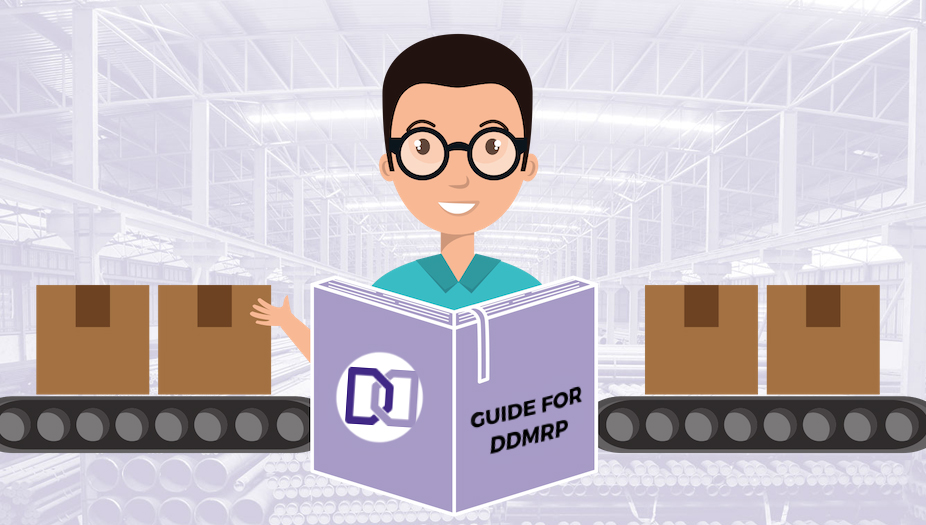A Beginner’s Guide to Demand Driven Material Requirements Planning (DDMRP)
DDMRP, or Demand Driven Material Requirements Planning, is the next generation planning and execution method that aims to control the supply chain of a business or enterprise. This method is based on the preservation and management of the flow of relevant information.
DDMRP deals with mitigating changes and absorbing possible shortages of supply in the manufacturing process. The supply chain is always driven by customer demand, and supply shortages are often inevitable at some point, even in small businesses.
By using demand driven material requirements planning methodology (DDMRP), it is possible to control replenishment efficiently and on time by adding buffers to the supply stock and adjusting them when needed.
The Core of Material Requirements Planning Approach
The mantra of DDMRP is “position, protect, and pull”. It is the principle that bonds five subsequent components of DDMRP. The complete planning and execution methodology of DDMRP is:
- strategic inventory positioning
- buffer profiles and levels
- dynamic adjustments
- demand driven planning
- visible and collaborative execution.
The first three components are defining demand driven material planning model: strategic inventory positioning identifies where to place the decoupling points, buffer profiles and levels evaluate the protection level of the decoupling points, dynamic adjustments evaluate market changes, operation parameters, future events, and based on data, regulate the flexibility of the protection levels.
The last two components define daily operation of the method: demand driven planning is the process of supply order generation; visible and collaborative execution is an open, visible way of supply order management.
The Rise of the Concept
There is a lot of information out there exploring the demand driven method or DDMRP. Becoming demand driven requires a shift in supply process from the traditional methods of supply (so called “push and promote”) to the actual demand flow-centered method known as “position, protect, and pull”. The term “actual demand” must be emphasized because of its importance to the DDMRP approach.
The term “demand driven” was introduced by PeopleSoft in 2002; PeopleSoft was purchased by the Oracle in 2003, and the term was forgotten for a while. In 2007, American Manufacturing Research gave the term a re-birth by using it as a part of their “Demand Driven Value Network”.
In 2011, Orlicky’s Material Requirements Planning (Ptak and Smith) published the first blueprint of Demand Driven Material Requirements Planning positioning it as a new demand/supply management logic. Demand Driven Institute was also established in 2011.
Going forward, from 2012 to 2017, Demand Driven Institute published numerous papers, case studies, and other materials about DDMRP, partnered with International Supply Chain Education Alliance, and launched the Certified Demand Driven Planner program. About 2,000 people were trained by this program. The Demand Driven Institute in collaboration with ISCEA released the Certified Demand Driven Leader (CDDL) program, which covers the principles and standards of demand driven operating model (and DDMRP).
The latest programs created by DDI and ISCEA are Demand Driven Planner Professional (DDPP)™, Demand Driven Leader Professional (DDLP)™, Demand Driven Fundamentals Professional (DDFP)™, Demand Driven Supply Chain Professional (DDSCP)™ programs. Today, the cooperation between DDI and ISCEA is over, and DDI is focusing on the development of new programs.
Why DDMRP Has a Huge Impact on Businesses Worldwide
To begin with, the oldest supply chains known to the world were established back in 1960s, and the initial management approach to supply was less than effective. The growing complexity of the modern supply chains makes DDMRP methodology vital for companies’ success. Product lifecycles are getting shorter while supply chain complexity and product complexity are constantly increasing.
Despite the growing challenges of the modern supply chain management and ongoing changes in all aspects and levels of the modern enterprise, the supply planning models are [often] still like the ones used half a century ago.
Demand Driven Material Requirements Planning is a method that proved its worth in many industries today. The core of DDMRP is an intuitive approach, visual process execution, and the full transparency of actions. These are key reasons why DDMRP is rapidly adopted by many leading companies in USA and all over the world. It’s a revolutionary and highly efficient solution that allows to control your supply chain, improve productivity, customer service, business flow, and decrease spend.
Source: Demand Driven Institute












